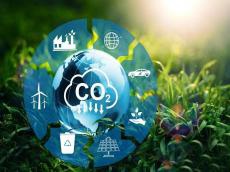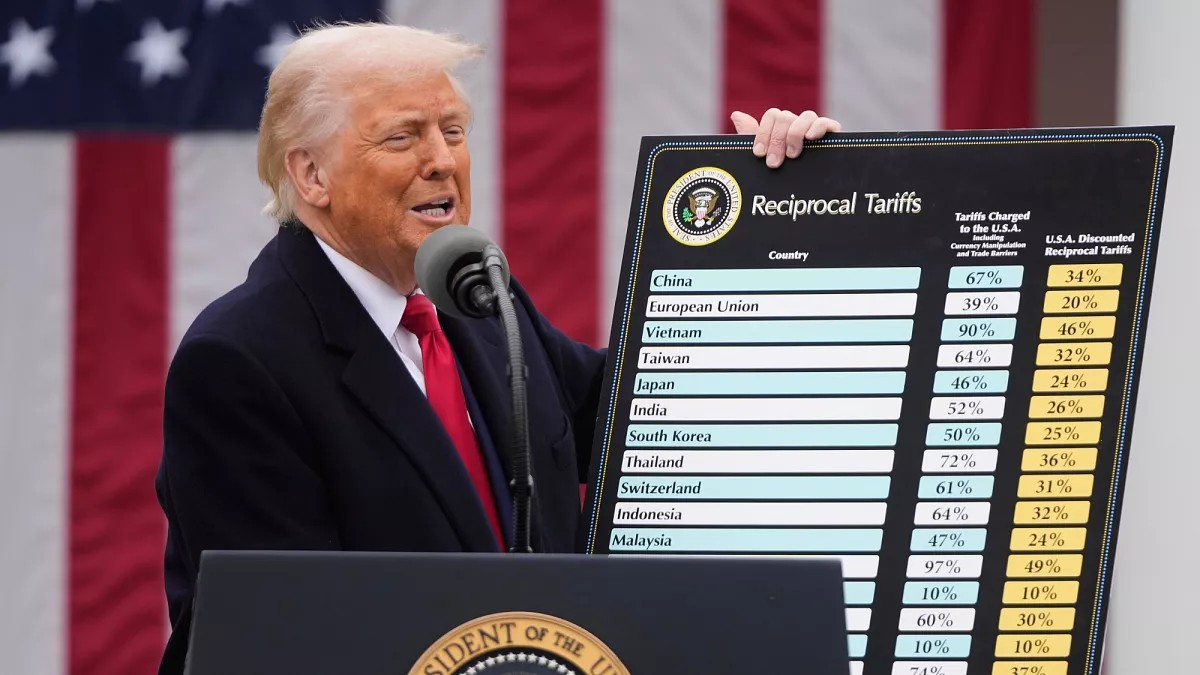|
|
TODAY.AZ / Business
Azerbaijan stays committed to climate & economic stability by cutting greenhouse gases
31 July 2024 [08:30] - TODAY.AZ

Climate change has emerged as one of the foremost global challenges, capturing the attention of leaders and communities worldwide. Azerbaijan is demonstrating its commitment as a reliable energy partner and a responsible member of the international community in the fight against global warming. This November, Azerbaijan will host a significant UN event: the 29th session of the Conference of the Parties to the Framework Convention on Climate Change (COP29). Additionally, the country's declaration of 2024 as the "Year of Solidarity for the Green World" underscores its dedication to combating climate change.
Azerbaijan’s commitment to the green agenda is evident in its ambitious plans to develop renewable energy. By the end of 2027, the country intends to operationalize nine solar and wind power plants with a combined capacity of 2 gigawatts. Furthermore, by 2030, ten more such plants will be established, expanding the capacity to up to 5 gigawatts. This initiative aligns with the global "Sustainable Development Agenda until 2030," adopted by world leaders at the historic UN Summit in September 2015. This agenda emphasizes the importance of addressing climate change and mobilizing the international community while ensuring no one is left behind.
The urgency to tackle climate change globally was highlighted by the Paris Agreement, signed on December 15, 2015. At the 21st Conference of the Parties (COP21) in Paris, 195 countries agreed on measures to limit global warming to well below 2 degrees Celsius above pre-industrial levels, aiming for a more ambitious target of 1.5 degrees. With global temperatures currently rising by around 1 degree, effective collaboration among these nations is essential for achieving these climate goals.
Azerbaijan ratified the Paris Agreement on April 22, 2016, and submitted its "Nationally Determined Contributions" (NDCs) to the UN Framework Convention on Climate Change in October 2015. The NDCs outline Azerbaijan’s commitment to reducing greenhouse gas emissions by 35% by 2030 relative to 1990 levels. During COP26 in Glasgow in 2021, Azerbaijan further pledged to cut its climate impact by 40% by 2050.
The topic of emission reductions was also addressed at the recent event "Green Construction in Azerbaijan," where Alida Saleh, Senior Advisor of the Climate Champions Team, spoke about the pressing nature of climate change. She emphasized the need to eliminate factors that contribute to heat emissions and enhance energy efficiency. Saleh highlighted the construction sector’s significant impact on the environment, noting that buildings account for 20% of emissions and 40% of energy consumption. She praised Azerbaijan’s new architectural projects for their sustainability and stressed the importance of a collaborative effort between the government and the private sector. Saleh concluded by announcing the preparation of a report on sustainable green construction in Azerbaijan, which will continue to be developed beyond COP29.
But what are greenhouse gas emissions? - Greenhouse gases (GHGs) are gases in the Earth's atmosphere that trap heat and contribute to the greenhouse effect. The greenhouse effect is a natural process that warms the Earth's surface. However, human activities have significantly increased the concentration of these gases, intensifying the greenhouse effect and leading to global warming.
Key greenhouse gases include - Carbon Dioxide (CO2): Produced primarily through the burning of fossil fuels (such as coal, oil, and natural gas) for energy, transportation, and industrial processes. Deforestation also increases CO2 levels, as trees absorb CO2; Methane (CH4): Emitted during the production and transport of coal, oil, and natural gas. It is also released by livestock (cows, sheep), and during the decomposition of organic waste in landfills; Nitrous Oxide (N2O):Generated from agricultural activities (such as fertilizer application), fossil fuel combustion, and industrial processes; Fluorinated Gases:Synthetic gases used in industrial applications, such as refrigeration and air conditioning. These include hydrofluorocarbons (HFCs), perfluorocarbons (PFCs), and sulfur hexafluoride (SF6). Although present in smaller quantities, they have a high global warming potential.
Why Are Governments Committed to Reducing Greenhouse Gas Emissions? - Governments across the globe are increasingly dedicated to reducing greenhouse gas emissions due to several crucial factors that impact climate change, environmental health, economic stability, and public well-being.
At the forefront of government efforts is the need to combat climate change. The accumulation of greenhouse gases in the atmosphere is a significant driver of global warming. This warming effect leads to rising sea levels, more frequent and severe weather events like hurricanes and floods, and disruptions to ecosystems. By implementing policies to cut emissions, governments aim to mitigate these effects, slow the rate of climate change, and prevent potentially devastating environmental impacts.
High levels of greenhouse gases also pose serious risks to human health. For example, gases like ground-level ozone contribute to air pollution, which can lead to respiratory issues, cardiovascular diseases, and other health problems. Efforts to reduce greenhouse gas emissions can lead to improved air quality, thereby enhancing public health outcomes and reducing healthcare costs.
The economic consequences of climate change can be severe, affecting infrastructure, agriculture, and disaster recovery costs. By addressing greenhouse gas emissions, governments seek to mitigate these risks, protect economic assets, and foster resilience against climate-related disruptions. Effective emission reduction strategies can help stabilize economies and promote long-term financial security.
Many nations are bound by international agreements, such as the Paris Agreement, which set specific targets for reducing greenhouse gas emissions. These agreements require countries to develop and execute national plans that align with global objectives. By adhering to these commitments, governments contribute to collective global efforts to address climate change and ensure international cooperation.
Reducing greenhouse gas emissions is integral to sustainable development. By encouraging the use of clean energy sources, improving energy efficiency, and supporting low-carbon technologies, governments can foster economic growth that is both environmentally responsible and socially equitable. This approach helps balance current needs with future sustainability goals.
Transitioning to renewable energy sources—such as solar, wind, and hydro—reduces reliance on fossil fuels and enhances national energy security. This shift not only decreases greenhouse gas emissions but also promotes energy independence and reduces vulnerability to global energy market fluctuations.
Transitioning to renewable energy sources—such as solar, wind, and hydro—reduces reliance on fossil fuels and enhances national energy security. This shift not only decreases greenhouse gas emissions but also promotes energy independence and reduces vulnerability to global energy market fluctuations.
What are key strategies for emission reduction? - Key strategies for emission reduction include transitioning to renewable energy sources like solar, wind, and hydro to replace fossil fuels, which significantly cut greenhouse gas emissions.
Improving energy efficiency across various sectors—such as upgrading building insulation, enhancing the efficiency of appliances, and optimizing industrial processes—also plays a critical role in reducing overall energy consumption and emissions.
Encouraging sustainable practices is another important strategy, which involves promoting waste reduction, sustainable agriculture, and conservation efforts. Implementing carbon pricing mechanisms, such as carbon taxes or cap-and-trade systems, creates financial incentives for reducing emissions by assigning a cost to carbon output.
Supporting innovation and research is crucial for developing new technologies and solutions that can further reduce emissions and mitigate climate impacts. Enhancing carbon sequestration through protecting and restoring forests, wetlands, and other natural ecosystems helps absorb and store carbon dioxide from the atmosphere.
These strategies, when combined, contribute to a comprehensive approach to lowering greenhouse gas emissions and addressing climate change.
In conclusion, reducing greenhouse gas emissions is essential for addressing climate change, protecting public health, ensuring economic stability, fulfilling international obligations, promoting sustainable development, and enhancing energy security. By implementing various strategies and committing to international agreements, governments aim to mitigate the adverse effects of greenhouse gases and build a more resilient and sustainable future.
URL: http://www.today.az/news/business/251253.html
 Print version
Print version
Connect with us. Get latest news and updates.
See Also
- 05 April 2025 [10:30]
Uzbekistan, Azerbaijan forge strategic tourism partnership - 04 April 2025 [15:27]
Turkiye reaffirms commitment to regional cooperation and green energy - 04 April 2025 [15:17]
Minister Junghietu highlights Moldova’s commitment to Southern Gas Corridor and renewable future - 04 April 2025 [14:41]
Kazakhstan, Uzbekistan, and Azerbaijan launch green energy project to Europe - 04 April 2025 [14:16]
AI integration planned for ASAN Service centers by 2026 - 04 April 2025 [14:09]
Azercell’s customer satisfaction index for call center achieved 95% in 2024 - 04 April 2025 [13:33]
Azerbaijan to deliver green energy to Europe via new corridors, Minister says - 04 April 2025 [12:45]
Azerbaijan, Saudi Arabia’s ACWA Power explore seawater desalination project and new joint initiatives - 04 April 2025 [12:39]
Azerbaijan doubles gas exports to Europe, eyes Southern Gas Corridor expansion - 04 April 2025 [12:16]
Alat Free Economic Zone showcases investment opportunities at Hannover Messe 2025
Most Popular
 Turkiye to introduce parental consent for social media users under age of 16
Turkiye to introduce parental consent for social media users under age of 16
 UK, Poland and Northern Europe want to create joint defense fund
UK, Poland and Northern Europe want to create joint defense fund
 How Donald Trump’s tariff impacts Azerbaijan’s trade with US [COMMENTARY]
How Donald Trump’s tariff impacts Azerbaijan’s trade with US [COMMENTARY]
 They are trying to sell the tale of "Saint Rubik" to Trump
They are trying to sell the tale of "Saint Rubik" to Trump
 Azerbaijan, Russia mark 33rd anniversary of diplomatic ties with renewed commitment to alliance
Azerbaijan, Russia mark 33rd anniversary of diplomatic ties with renewed commitment to alliance
 Underperformer strikes back
Underperformer strikes back
 Pezeshkian’s visit to Baku comes at critical time for Azerbaijan-Iran relations
Pezeshkian’s visit to Baku comes at critical time for Azerbaijan-Iran relations
